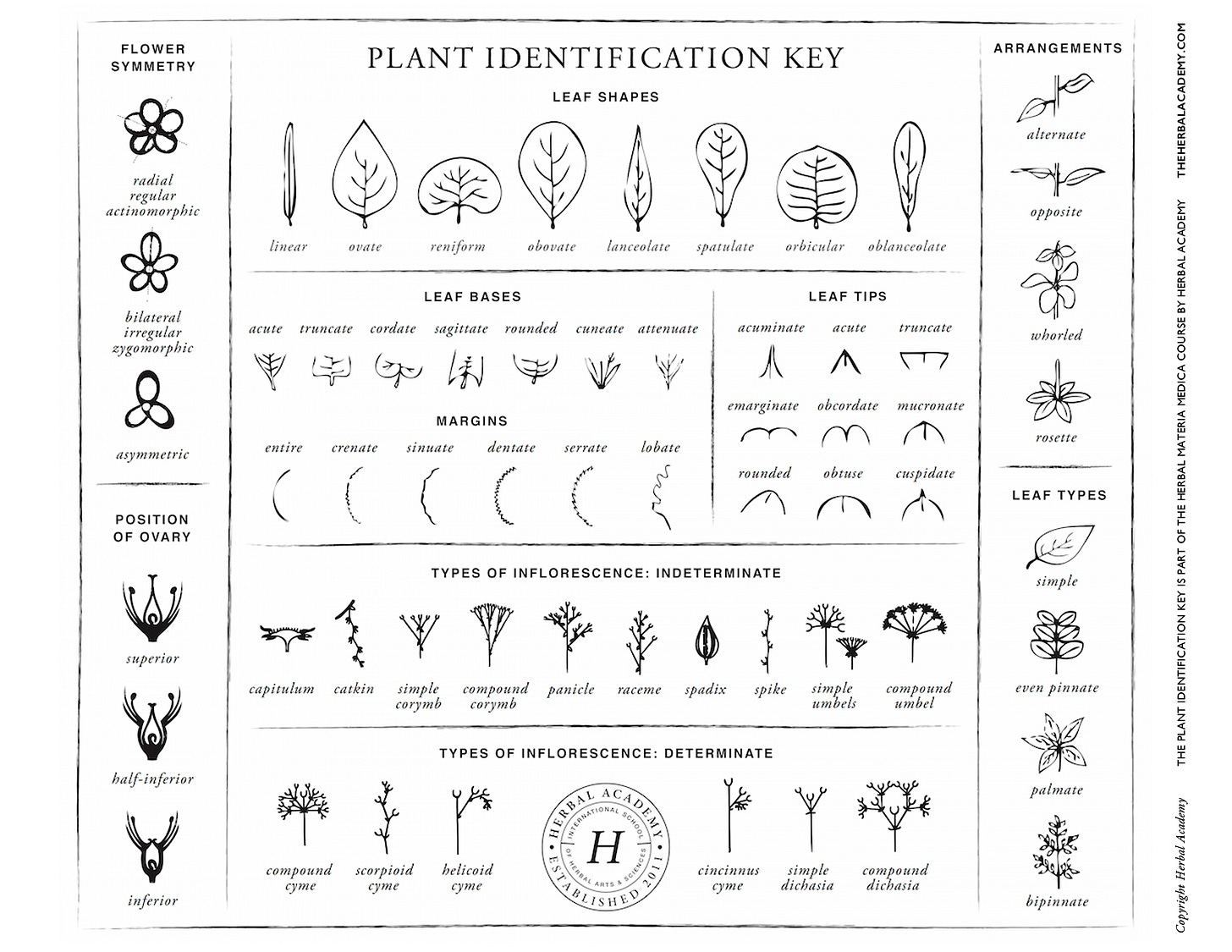Using Herbs Safely: Identifying Plants
Herb safety begins with proper identification of plants. The best way to learn plants is in person. When that is not possible, there are many available resources that can help in the identification process. Triple check your sources to verify that you indeed have the correct plant. If there is any risk of the plant being mistaken for a toxic plant, use it only once you have verified its identify with someone experienced in using that plant. Once you have properly identified the plant, you could taste a small amount of the plant to determine if it fits the taste profile of the herb you think it is. If it does not, go back to your resources and do some more digging.
RESOURCES TO AID IN PROPER PLANT IDENTIFICATION
While many apps abound to assist in plant identification, I do not recommend relying on an app to verify identify. You can use it as a starting point, but then go to the books and other reference materials to confirm identity. I have found the app Picture This to be a pretty good starting place.
Many other resources are available that can help aid in proper plant identification.
The Ontario Field Naturalists offer an extensive list of resources and field guides HERE. You will notice many of the recommended books and resources are from neighbouring US states as we share much of the same flora.
Jim McDonald, a skilled herbalist in Michigan shares many valuable resources on his website HERE including sites to help in plant identification.
UNDERSTAND BASIC BOTANICAL TERMINOLOGY
Some basic understanding of plant terminology is often necessary in order to use some of the above guides. I like the book Plant Identification Terminology by James and Melinda Harris.
The following image from the Herbal Academy is a nice introduction to plant terminology. You can download your own copy HERE.





